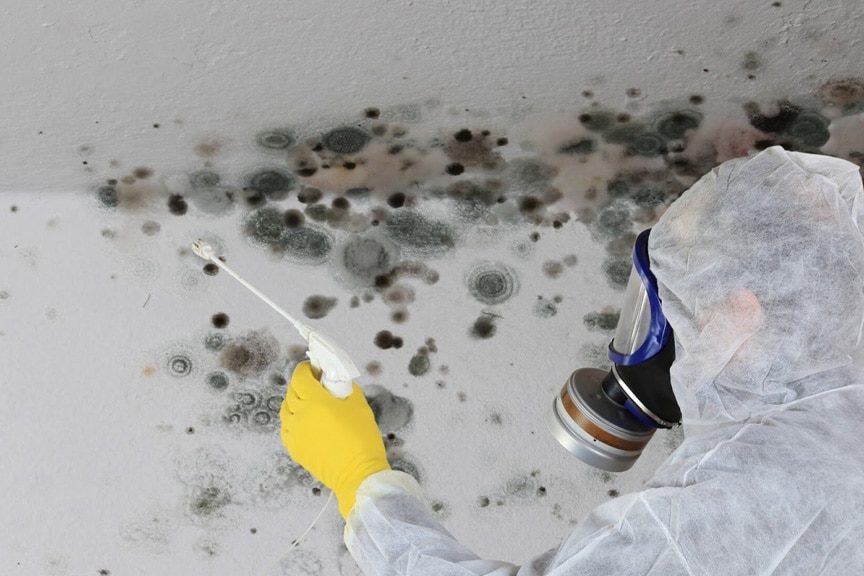It creeps up on you without a word. It hides where you can’t see it, then it lunges through your walls and floors. It takes over your house and then enters into you, getting you sick and tired.
No, it’s not a ghost or a monster. It’s mold.
70 percent of homes have mold in them. Most homeowners dispose of it, or the mold dies off on its own. But some people require extensive mold remediation services.
Many people rush to their computers and Google, “restoration near me,” when they hear they have water damage. But, the process catches them off guard. Get informed about how the mold restoration process works below so you can keep your home safe.
Here is your quick guide.
Table of Contents
The First Steps
Many people think that mold grows after flooding and storms. That’s true. Water can slip inside walls, and mold can develop there.
But water damage can occur in your home in a number of ways. A leak in your roof or plumbing can spread water into your walls. High humidity and natural dampness in your basement can allow mold to grow.
You need to take care of water damage as soon as it occurs. If a pipe breaks in your home, call a plumber. If you notice a room has high humidity, open up the windows and install a dehumidifier.
There are several distinct signs of mold growth. You may smell a musty odor, or your walls may grow discolored. You may notice you have nasal congestion and a cough after entering a room.
You can clean small amounts of mold yourself. Spray moldy areas with baking soda and water, then scrub with a brush. Rinse the surface over and dry with a rag.
But if you notice a lot of mold, you need to hire a mold remediation company. You can inhale mold while cleaning it, causing respiratory problems. Mold remediation specialists wear protective equipment and have training that you don’t have.
Mold Removal
When you call a service, you should describe in detail what your problem is. Tell them what color and texture the mold is. Tell them what water damage you had and where the mold is in your house.
A mold removal technician will arrive. They will go to the mold and identify what strain there is. They will investigate the sources of water, determining if they are hazardous.
Flooded rooms will be cleared of water first. Technicians need to enter your home, and they cannot do that if there is a lot of water.
Once the technicians can enter the area, they will isolate it. They will close all windows and doors and install polyethylene sheeting, sealing all air currents.
You will not be able to enter the space for at least a couple of days. Move all essential items out of the room. If you think an item might have mold on it, leave it out to dry.
If a large part of your house has mold, you will have to leave it. Prepare to stay at someone’s house or a hotel. Pack your bare essentials and leave as soon as possible.
Cleaning and Testing
Technicians will take all wet and moldy materials and place them in plastic bags. These materials include walling and flooring.
Once everything moldy is removed, non-porous surfaces get cleaned. The technicians spray a biocide, a chemical that kills the mold’s ability to reproduce. They then clean up the spores with vacuums and damp-wipe all surfaces to remove anything that’s left.
Some spores may be airborne, so technicians mist formerly-contaminated areas. This pulls the spores in, allowing for easy removal.
Surfaces are also disinfected, in case any bacteria remains on them. Deodorizing agents kill bad odors and restore air circulation. If there are any wet materials, the service will dry them with dehumidifiers and fans.
What to Do Next
Once cleaning is done, the company will test the quality of your air throughout the home. If tests detect mold, the mold removal process may start again. Their tests can look for pollutants like pesticides, allowing you to take care of those as well.
Your technicians can give you a report on their services. They will tell you what mold they removed and how they removed it. This will give you insight into what to do next.
You should repair and replace all surfaces in the contaminated room. Technicians can replace some building materials, but you may need a renovation service for more advanced jobs.
Make sure to repair surfaces outside your home as well. Gaps in your caulking can allow water to seep through and fill a space with mold.
Wrap and insulate your pipes to ensure they stay warm in the winter months. Frozen pipes leak very easily.
Keep the contact information of the company you hire. You do not know when a natural disaster will cause flooding again.
Things to Know Before Googling “Restoration Near Me”
Mold is many homeowners’ worst nightmare. Before you type “restoration near me” into Google, get the facts on black mold remediation.
When water damage occurs, get it fixed. If you notice an odor or strange discoloration in a room, you likely have mold. Call a mold restoration service right away.
Tell the service what is going on. They will seal off the room and you cannot enter it for some time. You may need to leave your home if mold is extensive.
Technicians will remove moldy objects and disinfect surfaces. They will then check air quality and give you a report. You can get renovations that will keep mold from developing again.
Get help from people with experience in mold. Cleanup and Total Restorations is Idaho’s leading mold restoration service. Contact us today.








